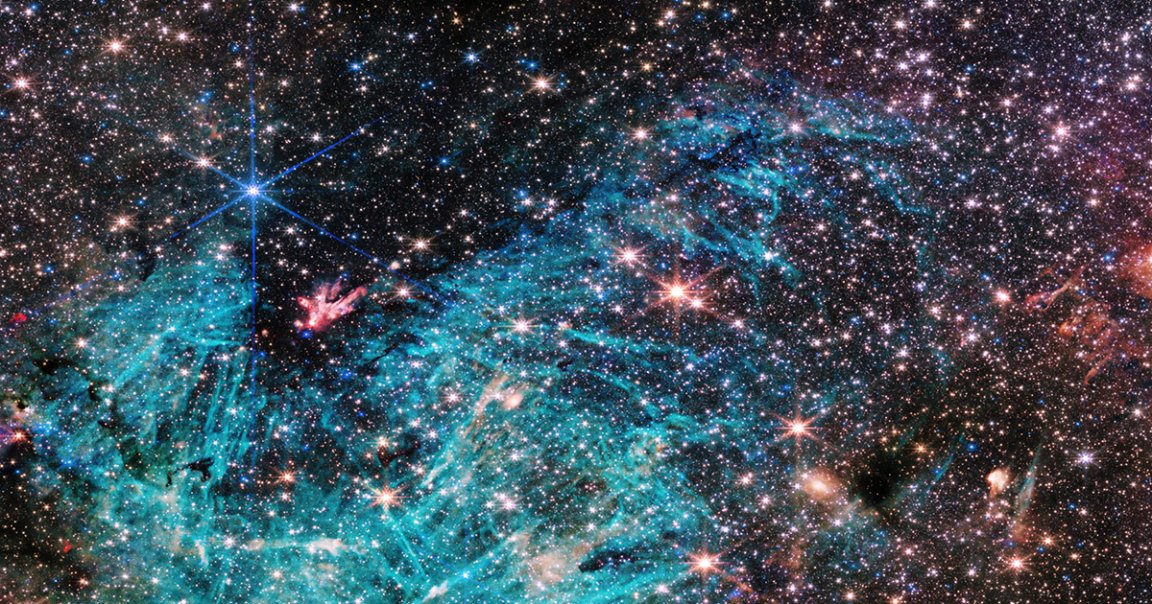
Picture Perfect
NASA has unveiled a spectacular new image of the Milky Way taken by the James Webb Space Telescope, showing ever greater detail of a region close to the nucleus of our home galaxy — replete with what the space agency is calling needle-like “unexplained structures” that have scientists intrigued and puzzled.
The James Webb Space Telescope, a powerful infrared instrument, was able to take a detailed snapshot of Sagittarius C, a central region of the Milky Way where stars are born and which is about 300 light years away from the gargantuan black hole that makes up the central hub of our galaxy.
The image contains an estimated 500,000 twinkly stars plus a cluster of protostars emerging from dense dark clouds of dust and gas (protostars are baby stars gaining mass before they become full-fledged stars.)
In addition to the stars, the telescope revealed feathery wisps, believed to be emissions from ionized hydrogen and colored as cyan in the image. Usually, these wisps are the product of massive stars belching out excited photons which ionize surrounding hydrogen gas.
Looking Back
Within these wisps, scientists are puzzled by the existence of streaky needle-shaped structures that are randomly assorted throughout the ionized hydrogen. Scientists don’t know what they are and are determined to plumb for more data in order to find out.
“There’s never been any infrared data on this region with the level of resolution and sensitivity we get with Webb, so we are seeing lots of features here for the first time,” said University of Virginia undergraduate student and principal investigator Samuel Crowe. “Webb reveals an incredible amount of detail, allowing us to study star formation in this sort of environment in a way that wasn’t possible previously.”
The Webb was launched back in late 2021, with its first images being released in 2022. The telescope was launched with the goal of peering back at the earliest periods of the universe, searching for exoplanets, examining early galaxies, and also charting how stars are formed, such as the ones captured in this latest image.
Scientists are excited about this new shot because not only is it beautiful, but it just might help researchers understand how stars flare into existence in the first place.
“The galactic center is a crowded, tumultuous place,” said Instituto Astrofísica de Andalucía researcher and co-investigator Rubén Fedriani. “There are turbulent, magnetized gas clouds that are forming stars, which then impact the surrounding gas with their outflowing winds, jets, and radiation. Webb has provided us with a ton of data on this extreme environment, and we are just starting to dig into it.”
More on the Milky Way: Trillions of “Rogue Planets” Are Wandering Through Our Galaxy, Scientists Say